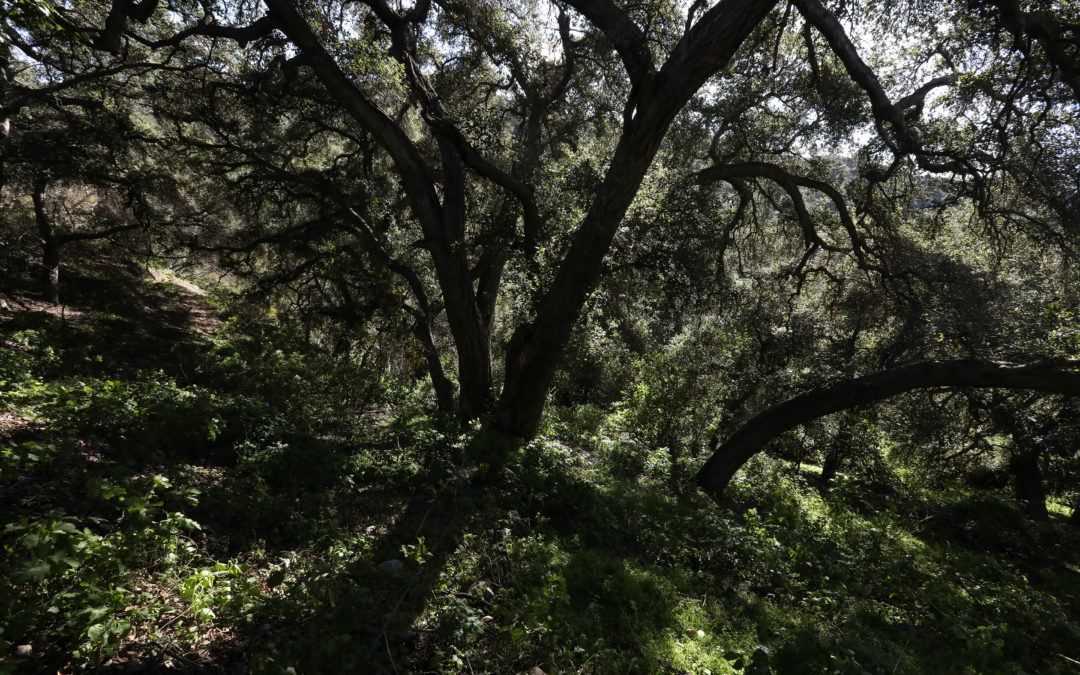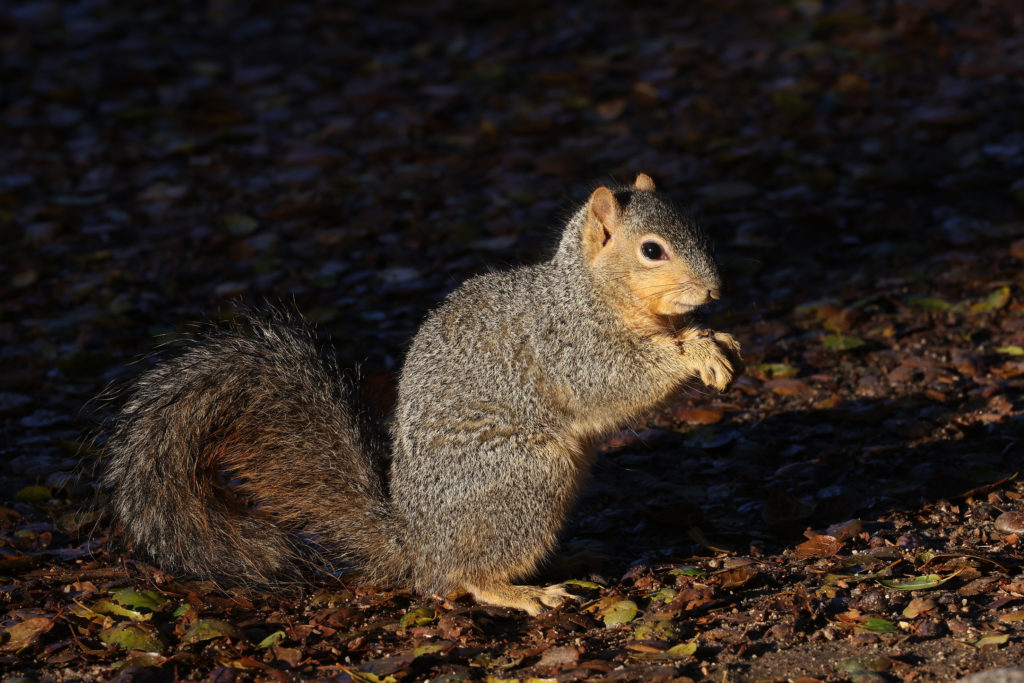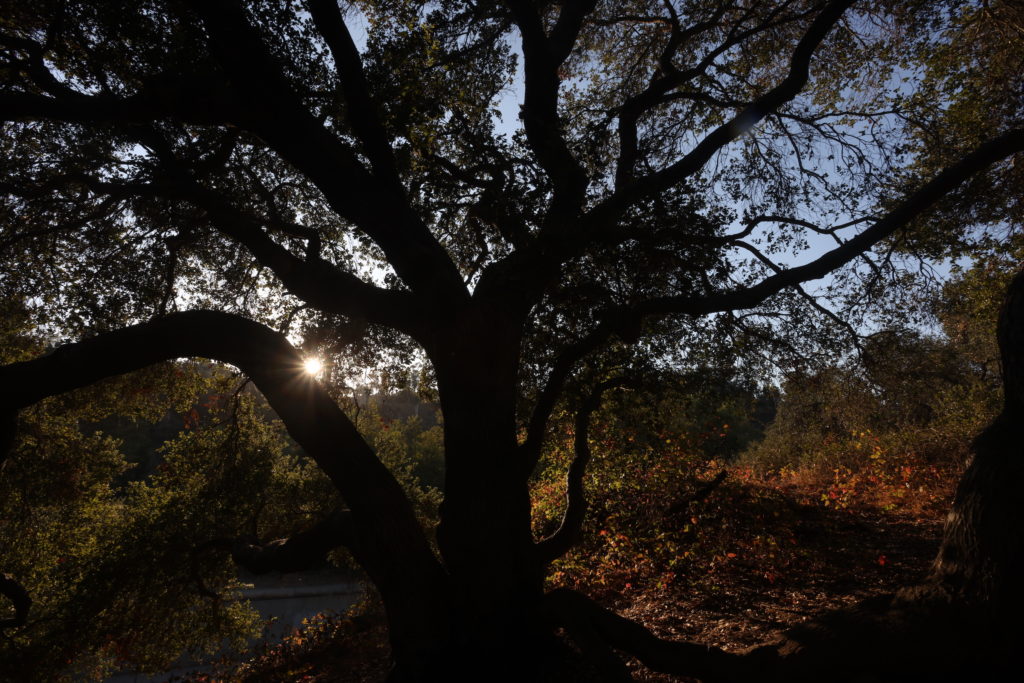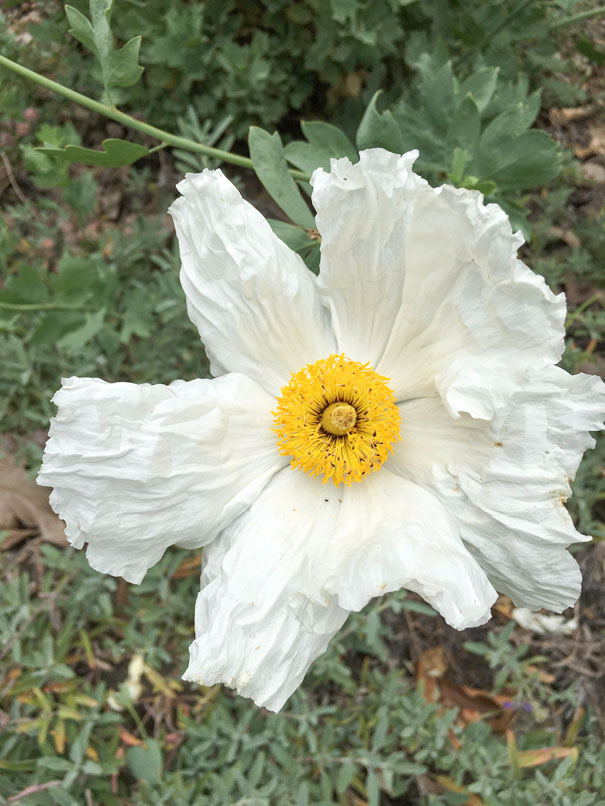William Hallstrom is a naturalist, Arlington Garden staff member, photographer, and an active member of the California Native Plant Society.
For the past several months, Arlington Garden has welcomed 5th graders from Pasadena Unified School District on trips to the garden to learn about our local ecosystems. Our staff is responsible for leading the trips, and we are lucky to have support from volunteers Antonio Pierola and Christine Lai, former teachers, whose help has been invaluable.
I am responsible for leading the students in exploring the oak trees at Arlington. Oak woodlands are a departure point for many topics related to the environment and natural sciences. In fact, there are so many potential subjects for lessons that it can be a bit overwhelming to pare them into a presentation appropriate for the short amount of time that we have with the students!
Arlington Garden is a habitat garden, an urban refuge for wildlife, unlike the sterile grass lawns found in a typical park. As a habitat garden, Arlington is well-suited for these field trips, which aim to teach students about native ecosystems, urban animals, and the importance of keystone species.
A keystone species is any plant or animal that is so critical to its ecosystem that removing it will cause the collapse of the network of plants and animals around it – just as removing the carefully fitted keystone at the apex of an archway will cause it to collapse. This metaphor gives you an idea of the importance of a keystone species within its habitat, but it tells you little about why it is so important.
Coast live oaks exist at the center of a vast community of plants, animals, and other forms of life. My California Naturalist Handbook tells me that oak woodlands in California are home to roughly 120 mammals, 142 species of birds, 60 amphibians and reptiles, and 5000 insects, and are the most widespread type of habitat in the state. An acre of oak woodland can contain tens of millions of invertebrates. These are just numbers though, abstract concepts, dry science.
The story of oaks as a keystone species is quite complex. How can we make this story more approachable? As storytellers, we can focus on specific examples.
Take the acorn. For birds and other animals, one of the biggest attractions of an oak tree is its acorns. Acorns are highly nutritious — high in carbohydrates and with a decent amount of fat as well — and an oak tree produces thousands of them, so there are plenty to go around. Scrub jays, squirrels, and woodpeckers are some of the animals that eat the acorns at Arlington Garden. Deer and bears eat acorns, as do humans:. For many Indigenous people of California, acorns were their most reliable source of food, and the harvesting of acorns is still practiced.
Because acorns are so valuable as food, they help oak groves to spread. Acorns have a tough exterior skin that makes them easy to collect and store. Squirrels and scrub jays will grab acorns, dig small holes, and put them in the ground to eat later. Most of them will get eaten, but animals will forget to eat a few, and these can sprout into new oaks. In part by this method, oak groves have managed to spread into most of the temperate parts of the northern hemisphere over the past 50 to 60 million years.
There are currently thought to be at least 450 species of oaks worldwide and about 20 species endemic to California. Many of these oaks have been sought as commodities for the strength of their wood, which was especially useful for ship building, when large wooden sailing ships were considered the height of technology. The oaks of Southern California exhibit the strength and durability that we consider characteristic of these trees. Their strong wood allows the oaks to form broad arching canopies to maximize their solar footprint, while durable leaves help to protect them during the hottest and driest times of the year. As the tree grows, the leaves carpet the ground underneath — decomposing slowly — to form a thick mulch helping to retain soil moisture. Oaks’ tough bark resists fire, and their roots are efficient at getting water.
For the past few hundred years, the oaks of California have been in decline. Early in the Spanish period, grazing livestock and the eradication of bears and other predators started to impact oak woodlands and this has escalated in the following centuries. We may think of the San Gabriel Valley as being once one of many citrus producing regions throughout Southern California, but do we remember it as an acorn producing region? Oaks were supposed to be a sign of fertile soil, and although oaks have been harvested for lumber, and firewood, or just removed for little reason at all, the number one reason for oak woodland clearing has been to make room for agriculture.
When I think about oaks, the word “fragmentation” comes to mind. Oak woodlands have been subdivided, separated, split, and otherwise sectioned repeatedly. This fragmentation, which has happened to historic ecosystems throughout the world, greatly damages the living things in them. Today, in a city like Pasadena, we see scattered individual oaks all over, occasionally in rows, but connected stands of oak woodland are mostly relegated to the last bits and parcels of undeveloped land in this area. Of course, that is why we have created legislation in California to protect native oaks, but most of the forests have already been removed.
You can’t have the story of California without the oaks, a story that goes on at such an incremental rate that it is difficult for anyone today to really understand, even when they are here among us.






Recent Comments